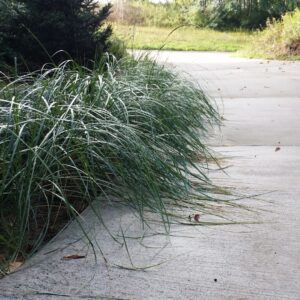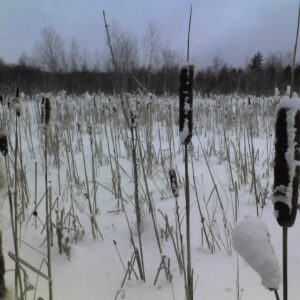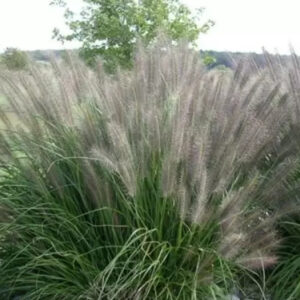Wholesale Fountain Grass in Michigan
Locally owned and operated in Mason County, Michigan, Cold Stream Farm is a retail and wholesale seller of Fountain Grass, Beachgrass, and other bulk plant species. We are proud to carry a limited variety of deciduous shrubs to help improve the appearance and function of any outdoor space.
Bulk Grasses Grown in Michigan
Cold Stream Farm grows, packages, and distributes bulk grasses with no minimum order. We deliver to the contiguous United States with extra shipping charges for orders from Canada, Alaska, or Hawaii.
Fountain Grass (Pennisetum alopecuroides)
The species Pennisetum alopecuroides is one of the most common “fountain grasses” from the family Pennisetum. Common names for this plant include Chinese Fountain Grass, Swamp Foxtail Grass, and Dwarf Fountain Grass, as the species is native to Asia and Australia.
In the height of the summer, fountain grasses brush-like flowers tend to glisten in the wind, giving the appearance of water spraying from a fountain. Fountain Grass typically grows to a mature height of 3 feet, attracts birds, and is completely deer-proof.
Learn more about our Fountain Grass for sale.
Beachgrass (Ammophila breviligulata)
Beachgrass, also known as American Beachgrass, is a durable native plant that matures to about 3 feet in height. Spilling out from one central point, Beachgrass plants are typically spaced between 12 and 18 inches for full coverage.
Beachgrass can withstand heavy winds and intense sunlight conditions. It is best grown in sand or light, coarse soils and is often used for dune stabilization and erosion control. As implied by the name, Beachgrass thrives naturally near the ocean and other bodies of water.
Take a look at our Beachgrass for sale.
Best Uses for Fountain Grass and Beachgrass
Both Fountain Grass and Beachgrass can dramatically improve ground cover and erosion while simultaneously beautifying an outdoor space. Planted grasses can help define boundaries or attract birds and can easily propagate to create solutions for large properties.
Like many species of grass, Beachgrass and Fountain Grass may be used in dried flower arrangements and other aesthetically functional purposes. While they are still alive, potted grasses are great for indoor and outdoor gardening spaces.
Some beachgrasses are edible to humans, and Fountain Grass can be safely eaten by livestock. These plants are not very nutrient-rich but may suffice to provide supplemental meals in difficult circumstances.
Common Problems with Fountain Grass and Beachgrass
Fountain Grass and Beachgrass are typically very well protected against diseases and problems associated with pests. Most commonly, examinations of existing plants may find that little holes have developed from the bites of slugs and snails. This is not a major concern to the plant’s overall health.
Seeds from grasses also tend to propagate freely, which may cause problems in areas with restricted land space. It is possible to limit seeds from being released with purposeful cuts during the plant’s producing season.
To avoid pooling and soils from becoming too muddy, Fountain Grass and Beachgrass are recommended to be planted in a pot, dune, or bed with significant drainage. Although moist soil is preferred, overly moist soil can severely damage a plant.
If they are frequently walked-over by people or animals, Beachgrass and Fountain Grass plants will not survive in heavily-trafficked areas. If grown in a yard, fencing may be required to keep your grasses looking their best.
How to Take Care of Beachgrass or Fountain Grass
As a very resilient plant, Beachgrasses and Fountain grasses typically take care of themselves. However, if you are in a cold climate, it is often recommended that these plants are taken inside to protect against freezing conditions.
Both of these plant species also prefer partial shade conditions. In hot climates with a lot of direct sunlight, the lifespan of beachgrass can be extended by routinely bringing the plant indoors during the height of the day. Plants will begin to show signs of danger with burnt, colorless tips.
While developing, regular watering and fertilization may be necessary for juvenile Beachgrass and Fountain Grass plants. Once the plants have reached maturity, fertilizer and water are not required as frequently.
Where and when to plant your grass
If you are placing your Beachgrass or Fountain Grass outdoors, it is recommended to plant the grass in the spring or fall, depending on the size of the bare root seedling. Do not attempt to plant grasses in the height of summer or within frozen ground during the winter months.
Be sure to allow ample space for your grass to grow, as the plants rarely require pruning or trimming. We recommend staggering large groups of plants to give a natural look and feel to the installation.
Order your Fountain Grass and Beachgrass from Cold Stream Farm
Cold Stream Farm is a proud supplier of wholesale and retail Fountain Grass and Beachgrass plants. We sell both transplants and bare root seedlings, with shipments throughout the United States and Canada (extra charges may apply). Get started by ordering online or contacting us today.



